The podcast is available on:
SoundCloud: https://soundcloud.com/the_sharp_end
iTunes: https://itunes.apple.com/us/podcast/the-sharp-end/id1080036452?mt=2
GooglePlay: https://play.google.com/music/listen#/sww
Stitcher: http://www.stitcher.com/podcast/the-american-alpine-club/the-sharp-end
Have a story you want to share? Contact Ashley.
During my work as an associate editor of Accidents in North American Climbing, I had the opportunity to sit down with Ashley and talk about the podcast and how it came about. Below, in a reversal of roles, I interviewed Ashley about her development of the podcast. Enjoy!
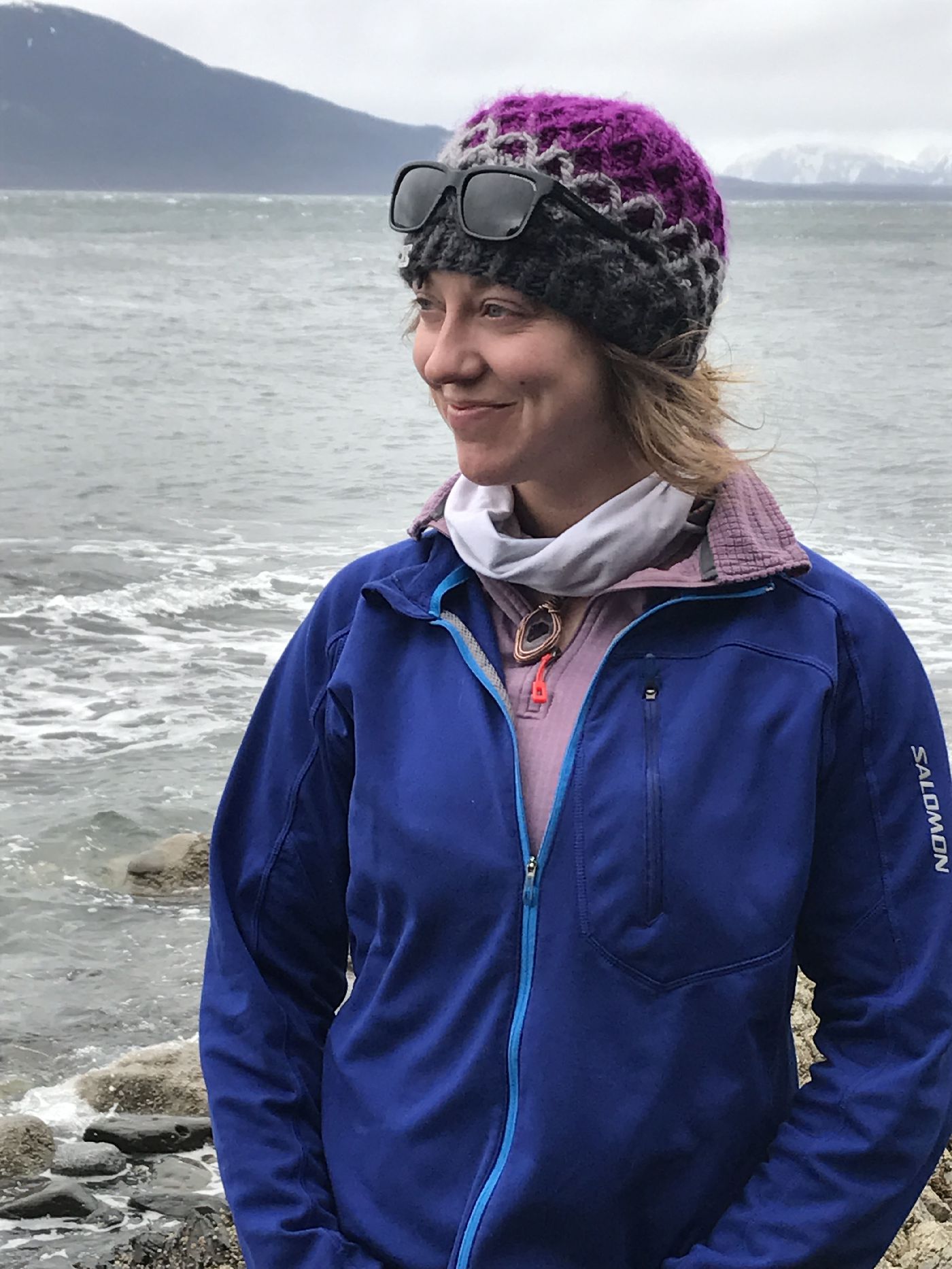
photo credit: Ashley Saupe
1) Hi Ashley and thank you for talking with me today. Before we start discussing the Sharp End podcast, can you tell our readers a little about yourself and your background in climbing and wilderness/climbing medicine and rescue?
Hi and thanks for having me. So, I was born and raised in Alaska. I started climbing when I was 19 and really fell in love with it. Waking up early for the long approaches, scoping lines, placing gear, and moving with the rock. I love everything about it. I’d go on these multi month long climbing road trips in my van in the Lower 48. I really did fall in love with the whole thing. Medical Background? Well I’ve kept a current Wilderness First Responder (WFR) since I was 17 and currently am an assistant instructor with Desert Mountain Medicine teaching WFR courses. I also volunteered with Alaska Mountain Rescue Group in Anchorage for a while but don’t have very much experience with mountain rescue in general. I’d love to get more into that if I had the right opportunity.
2) How did you come up with the idea for the Sharp End podcast?
I read the book Accidents in North American Climbing by the American Alpine Club regularly. I really love these books mainly because we can learn so much from the experience of people in our community. I came up with this idea when I was road tripping to the Tetons for a climbing trip. I wanted these stories to come to life. I wanted to be able to plug my iPod in and listen to them but that didn’t exist so I just made it exist. I basically just cold-called the American Alpine Club and pitched them the idea, and they liked it!
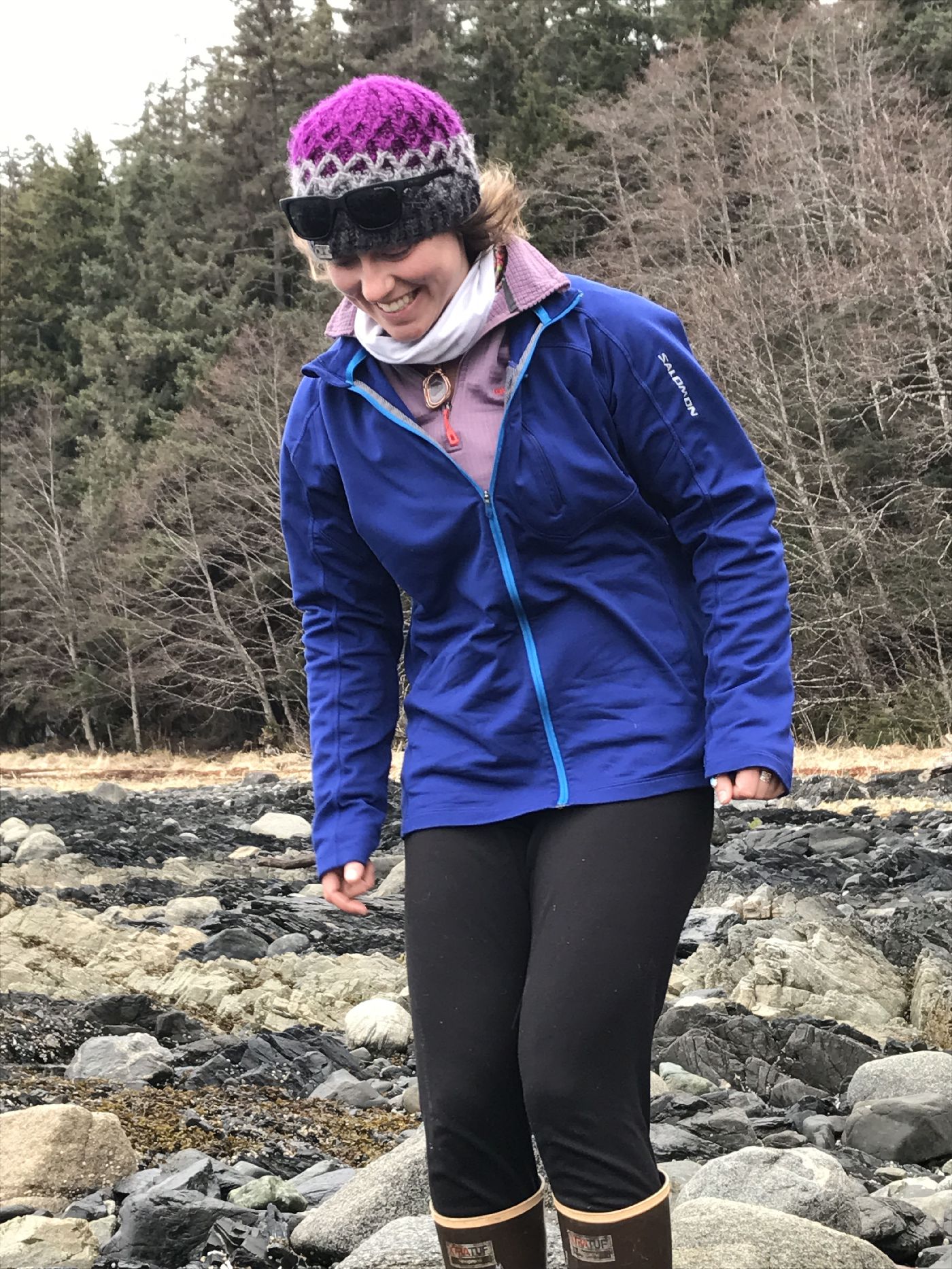
Photo credit: Ashley Saupe
3) Did you already have experience with creating and producing a podcast or was this something you learned after coming up with the idea? Was it difficult? What are some of the technical aspects that?
Oh no. Definitely not. In fact, I had just recently been exposed to the podcast world maybe weeks before. Also, I had just got my first ever computer that same year so finding the Y key was still a challenge. Ha-ha! I exaggerate that a little bit but seriously, talk about a steep learning curve. I went from owning my first ever computer to editing and producing podcasts in a matter of months!
4) You are now in your second year of the show, how is it going? What are the reactions, questions, and comments that you receive from listeners?
Second year! Wahoo! That’s so fun to think about. Honestly, I don’t get that much feedback and there aren’t very many reviews online but the ones there are have been really nice. It seems like people are really enjoying it.
5) How do you find topics and/or people to interview for these podcasts? If one of our readers was interested in sharing a story, how could they reach you with an idea for a future show?
I either hunt down a certain story that I hear about, or the AAC will give me suggestions of stories, or maybe someone will contact me with a story. Honestly, getting people to be on the show is difficult. But just in general, I try to line up the stories with the seasons. For instance, I wouldn’t want to launch a winter show in the middle of the summer. I also try to mix up the locations of the stories and not do three Alaska stories in a row.
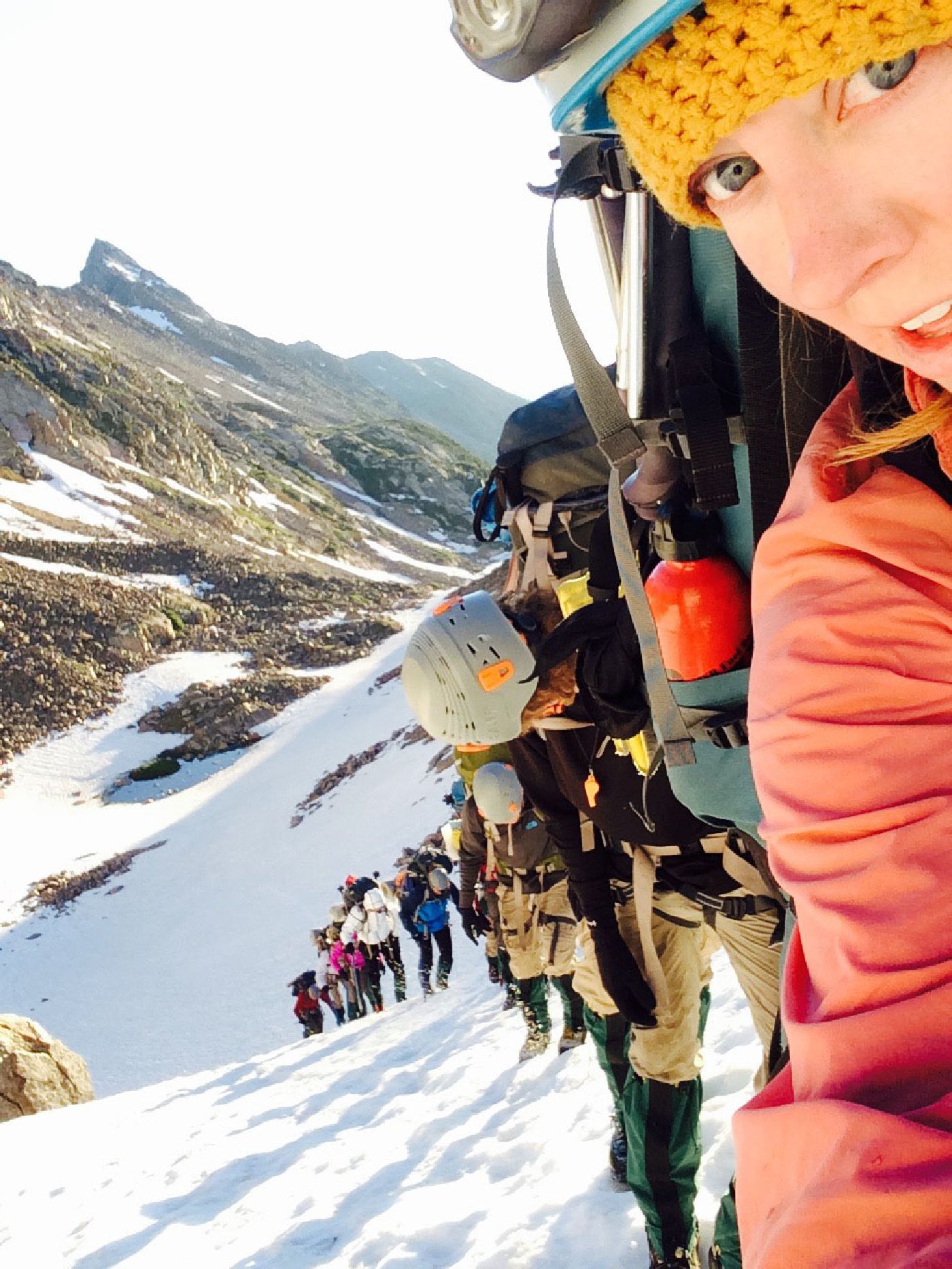
Photo credit: Ashley Saupe
6) Can you tell us why you feel it is so important to share these stories?
Well I mean one way to learn is to share experiences. We can learn a lot if we listen. If we are willing and able to put our ego aside and share our mistakes, so many other people can grow from that. All I want to do is help to minimize incidents.
7) How do you feel the Sharp End accomplishes its goal?
I think the Sharp End does this by making true stories come to life. Reading an incident report is one thing but hearing the people directly involved tell the story tugs on your heartstrings. It almost makes it more tangible. That person is no longer just words. They could be your brother, sister, partner, or coworker. It becomes so much more real and tangible when you actually hear a person describe their accidents, their feelings, what went through their mind.
8) A listener described the podcast as an “interactive Accidents in North American Climbing (ANAC),” while another found it “really valuable, and sometimes very moving, to hear directly for (sic) those involved in the events.” From reviewing other comments, this seems to be the general consensus among listeners. It seems that this format may be able to reach a subset of climbers who may not be interested in reading or even have access to ANAC, but who are still interested in learning from accidents. Is this what you have encountered?
Yes exactly. And it becomes more time efficient. When I would drive from one climbing area to another I wanted to hear those books come alive. You can’t read when you’re driving, running, biking, or ski touring but you can plug in and get educated while you get exercise.
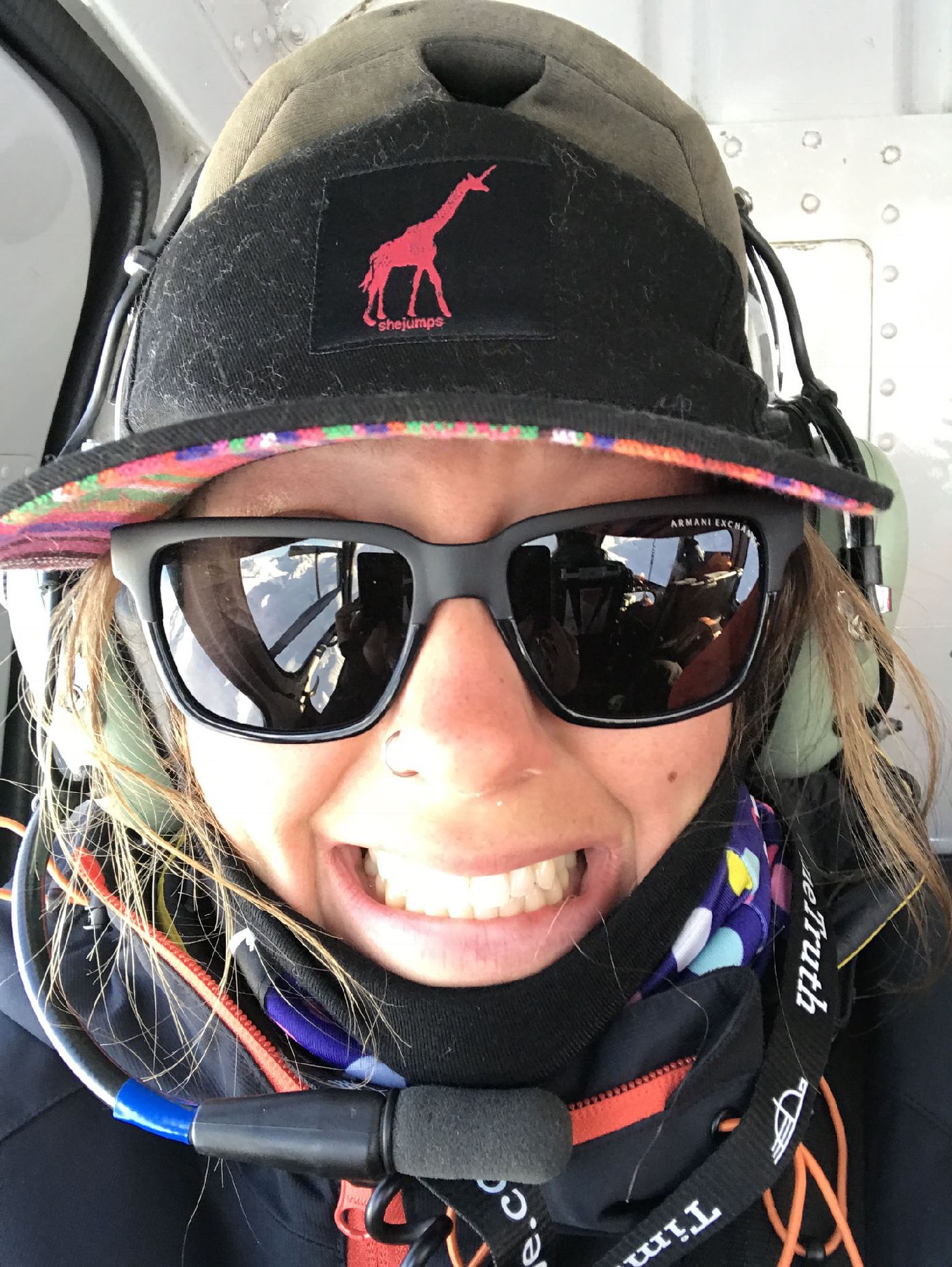
9) How many listeners are typical for a show? Do you find that the word is getting out and is the population that listens growing?
We average about 14,000 listens a month per show….and growing. I’m stoked!
10) Any humorous stories about the podcast or an interview that you would like to share with our readers?
I don’t really have any funny ones, but what is kind of fun about my podcast is that I interview and edit all over the world. I am constantly moving around. I don’t live in the same place for longer than three months so to make this podcast I have to be really fluid. I get interviews and edit all over the place. I think the most interesting interview location was on the side of the road in Ouray, Colorado, and then I did most of that editing enroute back to Alaska on my different flights and in the car ride from Anchorage to Haines, which was 13 hours.
11) It has been great talking and I appreciate you taking the time to sit down with me. Is there anything else you would like to share with our readers about the Sharp End?
I just want to thank the American Alpine Club for supporting my wild ideas. Also, thanks to the new sponsors who recently came onboard: Mammut, Vertical Medicine Resources, and the Colorado Outward Bound School. And most of all, thank you to the listeners!
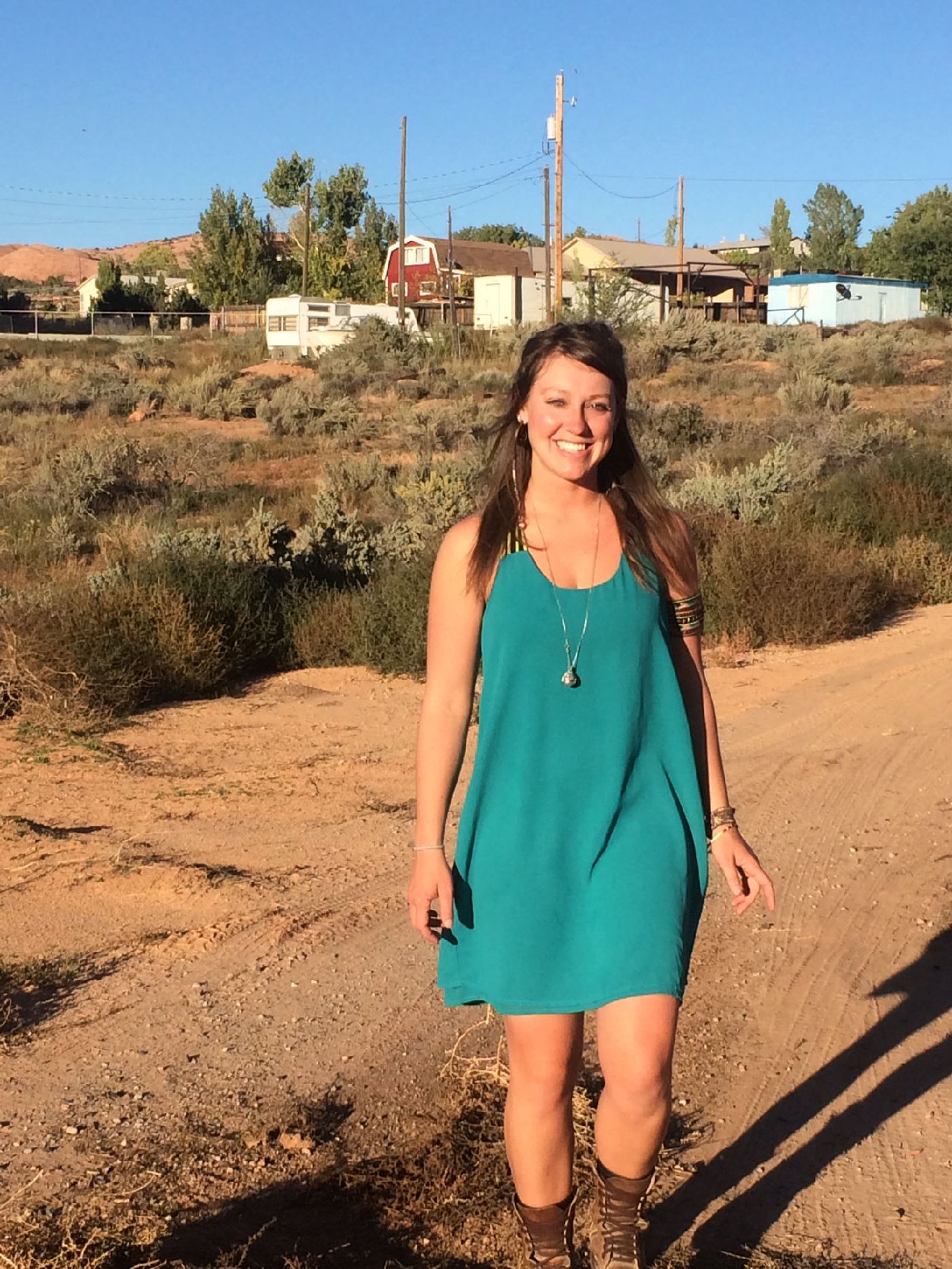
Links mentioned in this article
The Sharp End Podcast
Desert Mountain Medicine
Alaska Mountain Rescue Group
Accidents in North American Climbing
American Alpine Club
Mammut
Vertical Medicine Resources
Colorado Outward Bound School